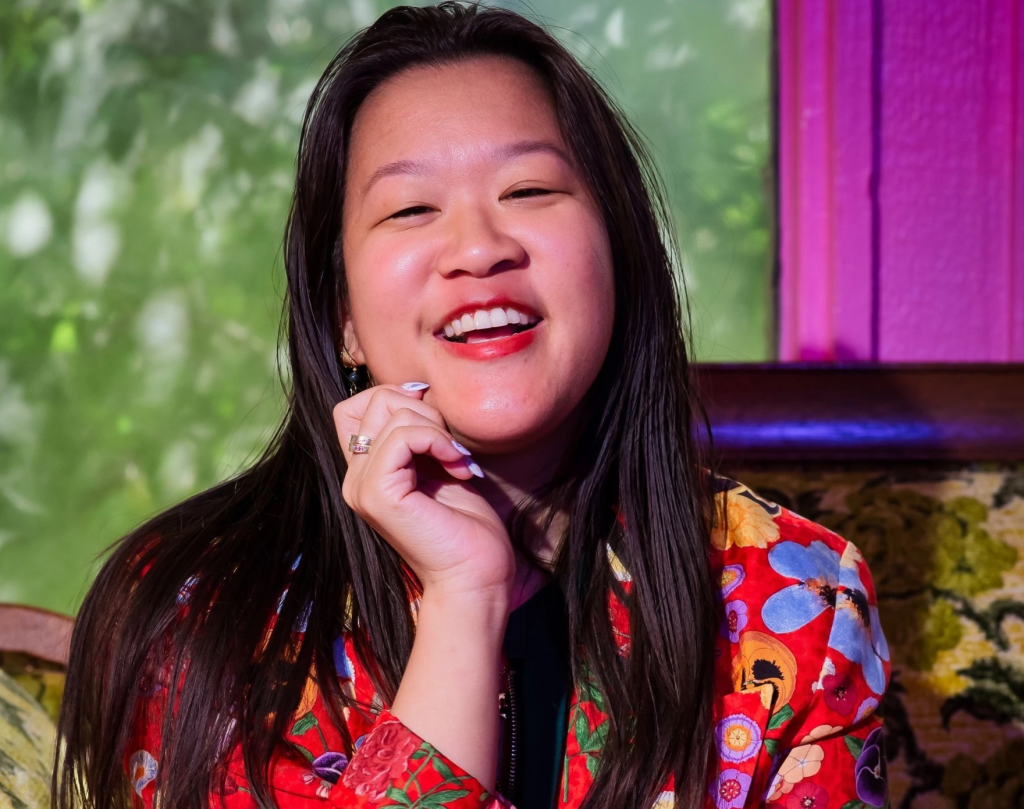
In the magical world of Disney’s movie Wish, the protagonist wishes on a star, which leads to a quest to support her community.
That mirrors North Texan Maddy Ullman’s experience working on the movie as an authenticity consultant. Growing up in a small town in Colorado, she didn’t see a lot of characters who reflected her experience as a Chinese American adoptee with cerebral palsy who’s also diabetic and neurodivergent.
She once thought: “ ‘Oh, I’m never going to be able to get into Hollywood. They’re never going to want me because of my intersectionalities – like being disabled, being adopted, being Asian.’ When do you see a person like that in media or working in media? I hadn’t for the longest time.”
But, she eventually worked her way to become a showrunner’s assistant in Hollywood. Then, she got the opportunity to consult on the Wish character Dahlia, a royal baker who’s disabled and Asian. In this interview, she shares her experience working on the film, representation and her quest to tell authentic stories.
It’d be great if you could talk a little bit about how long you’ve been living here and a little bit of your background. Did you grow up here?
I was adopted from Hong Kong at three and a half, and I spent most of my childhood in Colorado. I spent some time in Dallas during high school, but I never thought I’d be back. But after the pandemic, you just need a reset. I came back to Dallas and I actually really love it. So, it was only supposed to be a year sabbatical, but I’ve been here almost two years. I’m a photographer and social media manager here, but I also get to do remote work on projects like Wish.
I’d love to discuss a little bit about your consulting on Wish and how you got involved with that project.
I’ve been in entertainment since I was 24 so it’s been six years. I was living and working for two years out in L.A. – I worked at studios like Warner Brothers and Netflix.
So, one of my passions, especially in the entertainment industry, is to create more authentic disability representation, because we don’t usually see it in mainstream media. So, I was tapped in as a subcontractor for an organization called RespectAbility. Since Dahlia had a disability and was Asian, it was an intersectionality I never thought I’d see.
What does authenticity mean to you, and what does the day-to-day look like in that kind of work?
I was brought in as a contractor, so it’s very much just a “call me if you need me.” We would look at the big picture. We would go through the movie, just little things people wouldn’t think of.
A good example is they had Dahlia’s shoes be pointy – that’s not good for balance. I think it was about having a voice in the conversation about a character that was going to represent the community you belong to. We consulted on a Funko Pop: ‘Oh, does it look good? Oh, where does her crutch fall?’ So I got to see a lot of the products.
Again, it was more about what was feasible. It was like, can she reach that high or what movements would allow her crutch to be supportive? Would she have a seated position or would she be able to stomp? It’s about how she can exist in the movie where she is not just put in the realm of inspirational character or plot device.
I feel like that must be a unique challenge because you’re obviously a representative of all these different identities and groups. But at the same time, it is only one character and it can only represent so many things. So how do you think about that idea of wanting to represent different communities well, but also recognizing that it’s not a monolith and it’s only one character?
Exactly what you said. It’s just one character and everyone’s experience is very different. That’s something I still struggle with, because I do feel a need to represent my communities well. No one is ever going to look at a character and say, “Oh, that totally fits me.” There will always be someone that it doesn’t fit. But you know, just to have the intersectionality of being Asian, disabled and a woman character, I was like yes, yes.
When you talked about wanting to be the person that you wanted to see when you were growing up, what was the first Disney movie that you ever watched? What were some of those formative moments where you were like, ‘Oh, I don’t see anybody who looks like me’?
So, that is a really big, overarching theme, because I am adopted. My parents are white; my family, for the most part, is white. I was raised in a small town in Colorado where I didn’t see any other Asian people. No representation at all, in any sense of the word. I remember homecoming week. We had costume days and I really didn’t have anyone, so I dressed in black and said I was Lucy Liu from Charlie’s Angels.
So I’m just trying to be that representation, because it changes lives when we see ourselves or parts of ourselves in mainstream media. It normalizes it in a way that I didn’t have growing up.
This interview has been edited for clarity.
Arts Access is an arts journalism collaboration powered by The Dallas Morning News and KERA.
This community-funded journalism initiative is funded by the Better Together Fund, Carol & Don Glendenning, City of Dallas OAC, The University of Dallas at Texas, Communities Foundation of Texas, The Dallas Foundation, Eugene McDermott Foundation, James & Gayle Halperin Foundation, Jennifer & Peter Altabef and The Meadows Foundation. The News and KERA retain full editorial control of Arts Access’ journalism.

